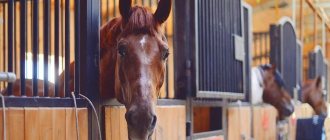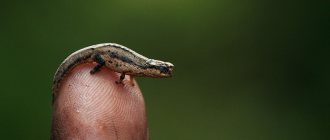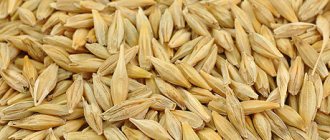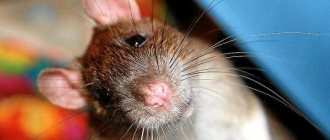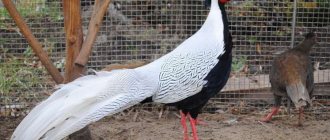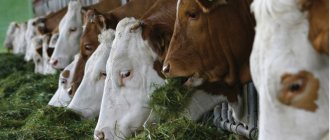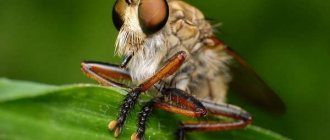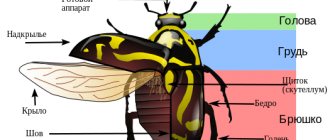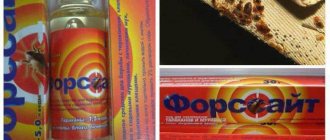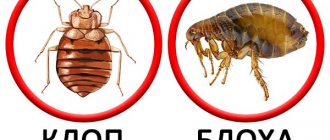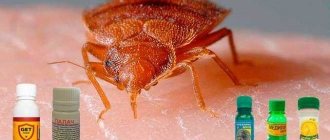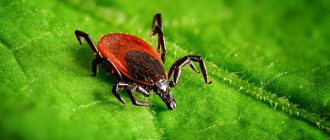WHEAT
(
Triticum
), a genus of annual and biennial grasses of the grass family, is one of the most important grain crops.
The flour obtained from grains is used to bake white bread and produce other food products; Flour milling waste serves as feed for livestock and poultry, and has recently been increasingly used as a raw material for industry. Wheat is a leading grain crop in many regions of the world and a staple food in northern China, parts of India and Japan, many Middle Eastern and North African countries, and the southern plains of South America. Also on topic:
CEREALS
The main wheat producer is China, the second largest is the USA; followed by India, Russia, France, Canada, Ukraine, Turkey and Kazakhstan. Wheat grain is the most important agricultural commodity in international trade: almost 60% of all grain exports. The world's leading exporter of wheat is the United States. Canada, France, Australia and Argentina also export a lot of wheat. The main importers of wheat are Russia, China, Japan, Egypt, Brazil, Poland, Italy, India, South Korea, Iraq and Morocco.
There are thousands of varieties of wheat, and their classification is quite complex, but there are only two main types - hard and soft. Soft varieties are also divided into red-grain and white-grain. They are usually grown in regions with guaranteed moisture. Durum varieties are grown in areas with a drier climate, for example where the natural vegetation type is steppe. Western Europe and Australia produce mainly soft varieties, while the USA, Canada, Argentina, Western Asia, North Africa and the former USSR produce mainly hard varieties.
Feed wheat
Wheat is not only the most important food crop, but also a feed crop. Almost half of the entire harvest is spent on feed needs.
This is a herbaceous annual plant, 50-150 cm high. It occurs in winter and spring. Today there are many varieties of wheat. Conventionally, they can be divided into hard and soft types. Durum wheat varieties have a thick-walled straw filled with a dense mass on top near the ear. In soft crops, on the contrary, the straw is thin-walled and hollow along its entire length.
Pests and diseases.
One of the most common diseases of wheat is stem, or linear, rust. Already 200 years ago it was known that barberry bushes contribute to infection (the parasitic fungus passes part of its life cycle on them), and laws appeared requiring their destruction. Until now, only its rust-resistant forms are allowed to be bred for decorative purposes. Barberry also serves as a source of new infectious races of rust fungus - more than three hundred of them are already known. Linear rust causes such serious damage that research is being conducted all over the world to identify races of the parasite as yet unknown to science and to create varieties of wheat resistant to it.
Other diseases worth mentioning are leaf (brown) and yellow rust, hard (smelly), stem and smut, powdery mildew, scab, root rot and root collar rot, two septoria blotches and viral infections (various types of mosaics and yellow dwarfism). The best control measure in all cases is the development of resistant varieties. An integrated approach, i.e. the combination of genetic resistance of plants with chemical treatments allows in some cases to significantly reduce losses (for example, from smut), however, effective means of protection against a number of diseases have not yet been developed.
Insect pests depend on the area of cultivation. In the United States, the most serious are the American grain sawfly, the wheat gnat, the cutworm and the common grain aphid. Other species spoil grain and flour in warehouses, for example, the tiny flour beetle, flour beetles, grain moths, Moorish booger larvae, and rice weevils.
As with diseases, the best way to reduce pest damage is to use pest-resistant varieties of wheat, but unfortunately no variety is immune to all potential insect threats. To other environmentally friendly ones, i.e. methods of control that do not include pesticide treatments include proper soil preparation, selection of special crop rotation schemes and optimal timing of sowing and harvesting, plowing the stubble after mowing (the latter method deprives many pests of food).
Grain classes
Depending on the quality, according to GOST, hard and soft wheat varieties are divided into different grain classes.
Hard grain has 5 divisions, and soft grain has 6. All classes, except 5 and 6, are used for food purposes.
- The highest, 1st and 2nd class of wheat refers to strong varieties, which can be used both independently and as an enhancer for weak varieties when baking.
- Grade 3 is considered very valuable. In the food industry it is used independently and does not need improvement.
- Class 4 wheat can be used in the food industry and baking only after it has been improved by higher grades.
- Classes 5-6 of wheat grain are classified as “fodder”.
Gradation by quality classes in this standard is carried out according to indicators of gluten, moisture, protein (except for class 5), density, pest infestation, harmful, grain and weed impurities.
When determining the quality of feed grain, first of all, the level of its condition is taken into account (the content of dry matter, crude protein, metabolic energy, crude fiber, phosphorus, calcium, etc.).
Biology.
The wheat plant has a culm-stem, characteristic of all cereals, with nodes and usually hollow internodes, and the leaves are simple, linear, alternate, two-rowed. Each leaf extends from a node and consists of a sheath, covering the overlying internode like a split tube, and a long narrow plate. At the border between the vagina and the plate there are three outgrowths - a wide membranous tongue adjacent to the stem, and two finger-like ears covering the latter.
The upper internode, or peduncle, bears the inflorescence - a complex spike. It consists of a geniculate central axis and successively small simple inflorescences extending from it - spikelets, facing the axis with the wide side. Each spikelet bears on its axis from two to five successively departing flowers, the totality of which is covered from below by two - upper and lower - spikelet scales, which are the covering leaves of a simple inflorescence.
Each flower is protected by a pair of specialized bracts - larger and thicker lower and relatively thin upper floral scales. For some, the so-called spinous wheat varieties, the lower flower scales end in a long awn.
The flowers are usually bisexual, with three stamens and a pistil bearing two feathery stigmas. At the base of the ovary there are two or three small scales - floral films, or lodicules, equivalent to the perianth. By the time of flowering, they swell and push apart the scales surrounding the flower. Wheat is a mostly self-pollinating plant, although cross-pollination occurs in some types. After fertilization, the ovary turns into a small hard fruit, a caryopsis, held in the ear by flower scales.
A caryopsis, or grain, is a pericarp formed from the wall of the ovary, inextricably linked to a single seed that contains the embryo and endosperm. The embryo is located on the side at the base of the grain and consists of a bud, a root and a modified cotyledon adjacent to the endosperm - the scutellum. After germination, the embryonic root will give rise to the primary root system, the bud will give rise to the above-ground organs of the plant and its “adult” roots, and the scutellum will secrete enzymes that digest the endosperm and carry its nutrients to the seedling that has begun to develop.
The sown grain of wheat absorbs water, swells and germinates. The bud and the embryonic root emerge and grow upward and downward, respectively. At the soil surface, from the first node of the straw formed from the bud, adventitious roots emerge, which vigorously branch and form the so-called. fibrous root system. The transition point between the stem and the root is called the root collar. Just above it, the lower nodes of the stem are closely brought together, and lateral shoots develop from the axils of their leaves near the surface of the soil - wheat tillering occurs.
Until this stage, the plant is considered a seedling. Then the phase of exit into the tube begins, i.e. rapid elongation of the straw, followed by heading, i.e. inflorescence formation: the upper internode (peduncle) carries the spike 7–10 cm above the top leaf.
When the grain has reached its final size, it contains an embryo and a watery, initially transparent, then becoming white endosperm as the starch content increases (the stage of so-called milk ripeness). Gradually, the moisture content of the grain decreases and its contents begin to resemble sticky dough in consistency (waxy ripeness). Fully ripened (technically ripe) grain is hard.
Feed wheat grade 5
Class 5 wheat is non-food, therefore it is intended for fattening domestic animals and producing animal feed. In terms of its composition, it is practically no different from food. However, if for grain intended for food purposes, a high percentage of starch and gluten content is considered an advantage, then for animal feed this is rather a disadvantage. Therefore, feed wheat in the feed of small and large ruminants, pigs, sheep and poultry (ducks, chickens, geese) serves only as an additive to the main diets and is not used as a monofeed.
- For chickens, grain is prepared by grinding, sprouting or yeasting and can constitute no more than 60% of the total feed.
- The amount of feed grain in a cow’s diet is calculated depending on the weight of the animal and milk yield, and can be close to 30% of the total nutritional value of the feed.
- For fattening pigs, the optimal amount of wheat in feed is 20-40%.
GOST requirements
General international standards for feed wheat are as follows: any variety/type, absence of foreign odors, absence of dangerous infections, integrity.
The requirements of GOST (R 54078-2010) are more specific. In accordance with them, wheat suitable for feeding livestock is the one that:
- looks healthy and has the usual color for grain;
- has no signs of mold, mustiness, or rot;
- includes less than 5% litter;
- includes less than 15% grain impurities;
- has less than 1% mineral impurities.
- has less than 1% of grain infected with fusarium;
- has less than 10% of grain affected by head fungus;
- includes 87% dry grain per kilogram;
An additional requirement of GOST is the concentration of exchange energy. For feed grain intended for cattle, this figure is above 12 MJ per kilogram, for pigs - more than 14 MJ, and for poultry - from 13 MJ.
Indicators of feed wheat
For forage there are mandatory quality requirements. Thus, feed wheat GOST R 52554-2006 must be healthy, not infested with pests and have industrial value. The composition may contain grain impurities up to 15%, weeds - 3%, sprouted grains no more than 2% Humidity should not exceed 15%,
In terms of protein content, feed wheat exceeds all other cereal crops; in addition, it is a high-calorie feed, second only to corn. The grain contains 10-15% proteins, a small amount (up to 2%) fats, 2-3% sugar, up to 65% carbohydrates, which are mainly represented by starch. There is also a full set of essential amino acids, vitamins B, E, PP, microelements - potassium, phosphorus, magnesium, sodium.
History of the origin of the plant
Since wheat began to be eaten in those distant times when there was no writing and permanent settlements, it is now difficult to establish where this cereal came from and what region it comes from. It was used for cooking by primitive people who lived in the 9th millennium BC. e. Initially they used wild wheat, but over time they began to domesticate it. This process took about 4,000 years.
Did you know? The root trunk of 1
plant is surrounded by many hairs: their number is 14 billion.
and the total length is 600 km. Presumably, the history of the origin and development of wheat originates in the territory of modern Turkey . Subsequently, this culture began to appear in other countries near the Aegean Sea, in India, Ethiopia, and China. And by the beginning of our era, cereals were grown almost everywhere in Asia and Africa. During the era of the Roman Empire, this plant was already grown in Europe. Residents of North and South America have cultivated it since the 16th century. In the XVIII-XIX centuries. wheat grew abundantly on Canadian and Australian lands.
Advantages of feed wheat
First of all, feed wheat is a valuable food product, which contains many useful micro- and macroelements, lysine, amino acids, phosphorus, which have a beneficial effect on the development and health of livestock. The soft variety is used to feed finicky animals and birds. Feed wheat (price 7,500 - 8,500 rubles/t) is considered more popular than other feed crops due to its affordable cost, taste, nutritional value and beneficial properties. It is used as feed for practically all types of agricultural livestock and poultry.
Animals fed on this food gain weight and height well and produce healthy offspring.
Forage demand
The demand for feed wheat depends on the region and the development of its livestock industry. It is sold on the foreign and domestic markets throughout the year. Prices depend on the harvest, variety and type of grain. On average, the cost of high-quality forage from a new harvest is from 8,000 rubles per ton.
When purchasing, it is recommended to check the quality of the forage. To do this, several bags are selected from the batch, the contents of which are sent for laboratory analysis.
To sell grain abroad, you must have the Commodity Nomenclature for Foreign Economic Activity, the product group code is 1001990000. The code helps to identify the product, correctly calculate customs duties and simplify filling out the declaration. The code must be entered on the delivery note.
Flaws
The disadvantage of feed wheat is its high content of gluten and starch, which form a sticky mass in the stomach of animals that can cause pain and colic in the abdomen. In addition, excessive consumption of wheat forage by livestock can lead to obesity, which increases the risk of developing various diseases. Therefore, it is necessary to very carefully monitor the dosage of all feeds so as not to harm your farm.
Characteristics
To obtain a generous harvest, it is necessary to adhere to the requirements that contribute to the successful cultivation of wheat. They are determined by the physiology of the plant. The main requirements for growth conditions are soil and environmental temperature. For successful growth and development of cereals, the temperature must be in the range of +10...+25°C. Hotter or cooler conditions negatively impact productivity. Wheat can withstand temperatures below 0°C only when it has been pre-hardened by cold. If the temperature is higher than +32…+35°C, the plant stops growing.
Feed corn (grain)
Corn is the queen of fields. Its feed value is 1.34 feed units. According to GOST 13634-90, corn is divided, depending on the percentage of damaged grains and grain impurities, into three classes. The third class of this crop is used for animal feed. The maximum permissible percentage of grain impurities for this class should not exceed 15%, and the number of sprouted grains should not exceed 5%. Depending on the color and type of grain, this crop is divided into 9 types, each of which can be used for feed purposes and feed production.
How to choose the right one
Documents are requested for each shipment delivered. For large volumes (for example, on farms), samples taken from several random bags are sent for laboratory testing.
Quality certificates indicate the test results, which indicate the presence/absence of dangerous microorganisms. Everything must comply with GOST. If there are any violations, the batch is returned to the supplier.
The cost of production is formed from the following indicators:
- varietal group;
- market filling – depends on the amount of the last harvest;
- type of grain;
- demand for a product in a particular region.
Features of cultivation
To get the optimal crop yield, you need to know the rules for growing it:
- Corn is undemanding to crop rotation; it can grow in one place for several years in a row. Potatoes, legumes and winter crops are also considered good predecessors;
- Suitable soil for the plant is chernozems; it grows a little worse on sandy loams, peat bogs and loams. Clay, acidic, salty soils, as well as wetlands are not suitable for cultivation. Soil acidity is better than neutral;
- to obtain grain and silage, they begin to sow when the ground warms up to +10...+12°C to a depth of 10 cm. Cold-resistant varieties can be sown a little earlier, at +8...+10°C. Sowing dates usually fall in the first half of May;
- seeds should be planted to a depth of about 5–7 cm. It is better to plant in squares rather than in long rows. This will ensure better plant pollination;
- the crop loves moist and breathable soil, so you need to ensure regular watering and loosening;
- Shoots appear in two weeks, and to prevent weeds from drowning out the plants, weeding must be done. This should be done carefully so as not to damage the roots. In the future, you need to remove weeds once or twice;
- Organic and mineral fertilizers are most important at the beginning of the growing season, during the formation of heads of cabbage and the milky maturity of grains. The crop requires more fertilizer than other grains. To obtain 1 ton of grain and the corresponding volume of green mass, 30 kg of nitrogen and potassium, about 10 kg of phosphorus and 8 kg of calcium and magnesium are consumed. Norms are calculated depending on the composition of the soil, the presence of organic matter and previously growing crops;
- Harvesting for grain is carried out when the final maturity of the cobs is reached, when the leaves turn pale and begin to dry out. The moisture content during this period is minimal. The cob should be harvested earlier, before the fruits begin to wither and wrinkle, and when pressure is applied to the grain, a milky liquid is released.
// Millet - what is it?
Millet is the hulled seeds of the millet plant. Note that this is an extremely variable plant - as a result, millet can vary both in color and grain size. The most common types of millet are yellow and red, and the grain size is close to quinoa.
Due to its high yield, millet is one of the cheapest pseudo-cereals - while not inferior in nutritional characteristics and vitamin content to the aforementioned buckwheat and quinoa. Millet can be used not only in human nutrition, but also as feed for birds and even pigs.
In addition to millet cereals (actually, millet), the cereal is found in the form of flakes, as well as flour, which can be used to make baked goods. However, the main recipe made from millet is millet porridge (“millet”), which can be cooked in either water or milk.
// Read more:
- quinoa - what is it? composition and benefits
- boiled buckwheat - how many carbohydrates does it contain?
- glycemic index of cereals
Benefits and harms
The key advantages of millet are its low glycemic index, low fat content, high fiber content, full amino acid profile, as well as the presence of a number of important vitamins and microminerals - since millet retains its shell during processing.
The downside is that millet contains goitrogens that can suppress the thyroid gland and reduce the production of thyroid hormones¹. Similar substances are also found in soy, cabbage, sweet potatoes and flaxseed. If you have thyroid problems, these products should be consumed with caution.
Feed production in different types of farms
Fodder plants can also be grown for sale by conventional crop farms, but they are often produced by livestock enterprises themselves. If we talk about Russia, we have four types of farms that breed farm animals:
- small farms;
- private farmsteads of citizens;
- former collective farms that managed to adapt to new conditions, or were bought out by new owners;
- modern livestock complexes, often owned by agricultural holdings.
Each of these types of farms has its own way of obtaining feed, which is determined by their legal status, structural organization and available resources (financial, land and human).
Private individuals (residents of rural areas) and small farmers own approximately half of the livestock population in Russia, including half of the cattle and most of the goats and sheep. However, the production and consumption of artificially grown feed on these farms is by no means proportional to the number of animals.
Often, peasants try to make the most of free wild herbs. The cultivation of forage grasses also takes place, but is highly dependent on the availability of natural hayfields in the vicinity of a particular farm. Sugar beets, fodder beets and other fodder vegetables are also grown in very limited quantities on private farms of citizens. The diet of animals owned by such owners always contains a lot of vegetables and fruits grown on the plot, but for various reasons not eaten by the owners themselves.
Small farmers, on the other hand, often purposefully grow forage crops to provide their animals with the right type of high-quality feed. These owners rely less on natural hayfields, but use every opportunity to purchase fodder vegetables and fruits (including from the population) at a minimal price.
In most former collective farms, livestock divisions were abolished and liquidated as unprofitable, as a result of which such farms completely concentrated their activities on crop production. However, some of them still retained a minimal number of animals. This was done due to the fact that a small number of livestock can be profitably maintained using crop waste or rejected products (for example, fodder cereals), which cannot be sold at a favorable price. These feeds are usually of low quality, but due to their minimal cost they still make it possible to obtain animal products with good profitability.
Finally, things are completely different in modern livestock breeding complexes organized according to Western models. From the very beginning, these farms are focused on highly intensive livestock farming, and therefore use in their activities a lot of concentrated feed made from highly productive forage crops. For this reason, they have to grow feed crops specially, but they use crop waste and substandard vegetables/fruits on a much smaller scale.
Feeding rye
In central and northern Europe, especially on poor soil, rye has been cultivated for centuries as a grain crop for bread production. And although the food contains rye
is also used, its value as a fodder crop is very small. Typically, rye is used in its green form in the form of crops between two main crops (as green manure), and fed to ruminants fresh or ensiled.
This rare use of rye as a feed crop is explained by the fact that old observations show a decrease in feed intake, impaired bone health and deterioration in the consistency of manure with a high proportion of rye in the diet.
This effect is due to the high content of anti-nutrients such as non-starch polysaccharides (pentosans, beta-glucans and pectin) and bitter substances.
But in recent years, two key conditions have changed that are very important for the use of rye in feeding
. On the one hand, in today's varieties the content of bitter substances and alkylresorcinols is much lower, making rye now more suitable for feed purposes. On the other hand, the price of rye on the market is very attractive for use in feeding, which can be very interesting from an economic point of view.
The actual exchange value depends not only on current grain prices, but also on a comparison of their quality indicators.
Fumigation of a wooden house
Why is wood fumigated? The first priority is to get rid of wood-boring insects and their larvae. In addition, this same procedure is also preventive, preventing the appearance of such pests in the future. This procedure uses a substance that is characterized by subsequent degassing. This is understood as the process by which all substances harmful to human health are decomposed at the molecular level. Most often, houses and other important buildings are built from such logs in the future.
The advantages of this operation for processing any raw material include the following:
- High efficiency, which consists in the destruction of any insects and their larvae, eggs, etc.
- The versatility of this method. It can be used to process both food and non-food products.
- The method is considered completely safe.
- Efficiency.
- The procedure eliminates not only existing pests, but also prevents their further occurrence.
Who carries out all the work?
This issue deserves special attention. The reason for this was that the whole procedure is associated with a great risk, which arises due to the fact that the work itself is carried out in premises where expensive food or non-food products are stored
In addition, all procedures must be carried out quickly and efficiently so that surrounding people are not harmed and there is no danger to the health of personnel. For these reasons, this work is trusted only to professional workers. What is fumigation? This is not only an effective and quick method to get rid of pests, but also a job that can only be entrusted to highly qualified individuals.
If employees know their job, you can get the following benefits:
- A responsible company always guarantees its work.
- The treatment will be carried out quickly, efficiently, and most importantly, the effect will last quite a long time.
- The procedure must guarantee the safety of products and materials undergoing processing, and the possibility of harm to human health must be excluded.
Are feed concentrates used when baking bread?
Thus, fodder - cereal grains and legumes - is intended mainly for feeding farm animals. In Soviet times, regulations prohibited the use of such concentrates when baking bread. Today, cooks and bakers, unfortunately, do not observe any special standards in this regard. In the production of bread, they can also use low-grade flour. This, of course, does not have the best effect on the quality of the finished product.
To improve the structure of bread made from low-grade flour, manufacturers use various types of improvers. This is basically gluten in its pure form. But be that as it may, feed grain itself (grade 5 flour) is still not used very often for baking such products. Usually cheap bread is produced using 3-4 grades of flour.
Usage
Corn is a unique plant in terms of its breadth of use. Flour, cereals, molasses, starch are made from its fruits, and used for the production of beer and alcohol. Do not forget that paper, viscose, insulating films, linoleum, even film are made from its stems, cobs, and covering leaves. Everyone knows that medicine uses corn silk to treat kidney stones, stimulate the liver, kidneys and gall bladder. In addition, corn is used to make feed for livestock.
Feed corn is perfectly stored in specially equipped premises, from where agricultural enterprises sell it for the production of oil or feed to everyone.
Those who grow edible corn on their plots or buy it at the market boil it for several days. It can only be preserved by freezing or canning.
If suddenly it occurs to someone to use sweet corn for feed, then this can also be done immediately after harvesting. But this is unlikely, because its production is more expensive than fodder. This is what we buy all year for salads and side dishes, take expensive tin cans home and enjoy its sweet, delicate taste.
Symptoms of overeating of crushed meat in cattle and their treatment
Overfeeding calves with grain mixtures can lead to serious consequences. Undigested components will begin to ferment in the rumen, causing digestive problems and intoxication of the body. You can assume overeating based on the following signs:
- lethargy, depressed state;
- lack of appetite;
- bloating;
- intestinal disorder.
The condition is treated with a starvation diet. Until the calf's digestion is normalized, it is given only hay and water or decoctions of flaxseed and oats. They envelop the mucous membrane and relieve its irritation.
In severe cases, laxatives are required: Glauber's salt or vaseline oil. It is important for the calf to get plenty of exercise for recovery. This improves peristalsis and helps cleanse the scar. As the animal recovers, it is gradually returned to a normal diet.
Feed consumption accounting
Countries leading in the world in the production and export of wheat
It is carried out according to the number of feeding days. Approximate structure: at the beginning of the month the number of goals is recorded, the data is entered into a journal. Over the next month, all changes are made to the herd: addition of new animals, loss of livestock. In parallel with this, they keep records of consumed feed. At the end of the month, the results are compiled; the formula for calculations is identical to determining the volume of milk yield.
Characteristics of Kazakh white-headed cows, advantages and disadvantages of the breedRead
Controlling feed consumption is needed for a number of activities. This is a forecast of feeding days and determining the number of individuals to receive feed additives.
